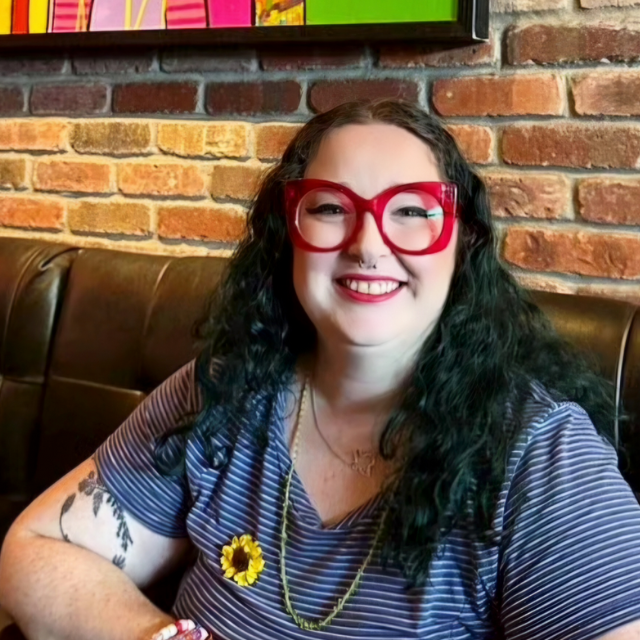
by Calien Trevino | Jan 10, 2025 | Anxiety, General, Personality Disorders, Trauma- and Stressor-Related Disorders
Hey friends! Today we’re talking about something super relevant as we begin a new year: self-acceptance and the pressure to be perfect.
Let’s be real: this time of year can be a lot. We’re all looking back at what we’ve achieved, what didn’t quite go as planned, and setting our sights on what we want in the next 12 months. It’s motivating but also, let’s face it, a bit overwhelming. Why do we always feel like we need to chase this idea of “perfect”? Spoiler alert: perfection isn’t real, and constantly striving for it can totally suck the joy out of life.
So, in today’s blog post, we’re breaking down how perfectionism messes with our mental health, how to ditch those unrealistic expectations, and how to set goals that actually support your well-being in the new year.
The Weight of Perfectionism
Okay, let’s get real: perfectionism is exhausting. It’s that voice in your head that says, “If it’s not perfect, it’s not worth it.” Or worse, “People will think less of you if you mess up.” Sound familiar? Same here.
Here’s the deal: perfectionism might look like ambition on the surface, but it’s not about doing your best—it’s about tying your worth to the outcome. When we tie our value to achieving impossible standards, we’re left feeling like we’re never good enough, no matter how hard we try. Not only is it draining, but it can also fuel anxiety, depression, and burnout.
Perfectionism has deep roots. For some, it starts in childhood, maybe when achievements were praised and love seemed tied to success. For others, it’s society’s message that we need to have it all together. Or maybe it’s just a way to feel in control when life feels chaotic. Whatever the cause, recognizing the pattern is the first step toward letting go of it.
Embracing Imperfection
So, what can we do about it? It’s time to make a major mindset shift. Instead of striving for perfection, let’s focus on progress. Let’s be kinder to ourselves and embrace the reality that being human means being imperfect.
Here are some practical ways to make that happen:
- Be your own hype person: When you mess up, talk to yourself like you would your best friend. Say, “It’s okay. I’m learning.” Cut out the self-criticism and replace it with kindness. Trust me, it works.
- Stop the all-or-nothing spiral: Perfectionism loves to say, “If I can’t do it perfectly, why bother?” Instead, take small steps and celebrate those wins—no matter how small. Progress is progress!
- Celebrate your wins: Whether you made it through the week or just took one step forward, give yourself some credit. Even the little things matter.
- Reframe failure: Instead of seeing failure as something to fear, view it as feedback. It’s not the end of the road—it’s just part of the journey.
- Set chill goals: Break big goals into smaller, more manageable pieces. This way, you won’t feel overwhelmed, and you can actually enjoy the progress you’re making.
New Year, New Mindset
Ah, New Year’s resolutions. It’s that time of year where we’re all about setting goals. But this year, let’s make those resolutions not just about achievements but about our well-being. Think mental, physical, and emotional wellness. Here are a few of my personal goals for the new year:
- Be more present: I’m cutting back on social media so I can really enjoy quality time with myself and my husband. Less scrolling, more connection.
- Take better care of myself: I’m committing to working out five times a week and drinking more water. It’s about feeling good, not just looking good.
- Read more: I’m aiming for two books a month. Reading is a huge stress-reliever and a great way to open up new perspectives.
- Date nights: Two date nights a month with my husband are non-negotiable. Whether it’s a fancy dinner or a chill night at home, these moments matter.
What about you? Here are some ideas for wellness-focused resolutions:
- Mental health: Start journaling, meditate, or maybe book that therapy session you’ve been putting off. Visit us at https://www.novatherapypllc.com to get started!
- Physical health: Focus on how you want to feel rather than how you want to look. Maybe it’s dancing, hiking, or just moving more.
- Emotional health: Work on letting go of grudges or being kinder to yourself.
- Relationships: Whether it’s setting boundaries or spending more time with loved ones, make connection a priority.
Remember: it’s not about perfection. It’s about progress. Let’s make this year about feeling good, showing kindness to ourselves, and embracing all the imperfect moments.
A Kinder Year Ahead
So, as we close, here’s the main takeaway: self-acceptance is the greatest gift you can give yourself. Let go of the pressure to be perfect, and you’ll unlock more joy, growth, and real connection in the year ahead.
Let’s step into this new year with a little more kindness for ourselves and others. Set goals that make you feel good, embrace your imperfections, and celebrate the journey.
That’s it for today’s post! If this resonated with you, share it with a friend who could use some encouragement. And hey, let’s keep the conversation going on social media—just, you know, not too much. 😉
Take care of yourself, and remember, you’re enough just as you are.

by Calien Trevino | Dec 20, 2024 | General
Forgiveness. Just saying the word can feel like a challenge—especially when the person who hurt you hasn’t apologized. Why should you forgive someone who doesn’t seem to care about the damage they caused? It feels unfair, right?
Here’s the truth: forgiveness isn’t about letting them off the hook. It’s about freeing yourself. When you forgive, you let go of the anger, resentment, and pain that’s been weighing you down. And it’s not just about emotional relief—studies show that forgiveness can reduce anxiety and depression, lower stress, and even improve your physical health.
But forgiving someone who isn’t sorry? That’s easier said than done. If you’re struggling with this, you’re not alone. Let’s break it down.
Why Forgiveness Isn’t About Them
Forgiveness often gets a bad reputation because we think it means excusing bad behavior or forgetting what happened. But that’s not what true forgiveness is. Forgiving someone doesn’t mean you’re saying, “What you did is okay.” It’s saying, “I’m not letting what you did control me anymore.”
When you hold onto resentment, it’s like carrying around a heavy backpack full of rocks. The person who hurt you might not even notice—or care—but you’re the one who feels the weight. Forgiveness is about taking that backpack off and choosing peace over pain.
Steps to Forgiving Someone Who Isn’t Sorry
Forgiveness is a process, not a one-time decision. It takes time, reflection, and self-compassion. Here are some steps to help you get started:
1. Journal Your Feelings
Write down everything you’re feeling—anger, hurt, sadness, frustration. Let it all out. Journaling is a safe space to process your emotions without judgment. If you’re ready, try writing a letter to the person who hurt you. You don’t have to send it; the goal is to release the emotions you’ve been holding onto.
2. Meditate or Practice Mindfulness
Meditation can help you focus on the present moment instead of replaying past hurts. Visualization exercises, like imagining yourself letting go of the pain, can also be powerful tools for forgiveness.
3. Set Boundaries
Forgiveness doesn’t mean allowing the person back into your life. You can forgive and still keep your distance. Boundaries protect your peace and ensure you’re not putting yourself in a position to be hurt again.
4. Reframe the Situation
This step is tough but transformative. Try to find a lesson in the experience. Did it teach you something about your boundaries, your values, or your resilience? Shifting your focus to what you’ve gained can help you move forward.
5. Talk to Someone You Trust
Sometimes, talking to a therapist, friend, or support group can help you process your feelings. It’s okay to lean on others when forgiveness feels overwhelming.
6. Practice Self-Compassion
Be gentle with yourself. Forgiving someone who isn’t sorry is hard. It’s okay if you don’t feel “over it” right away. Healing isn’t linear, and you’re allowed to take your time.
The Mental Health Benefits of Forgiveness
Letting go of resentment has a direct impact on your mental health. When you forgive, you’re not just lightening your emotional load—you’re also reducing stress and improving your overall well-being. Studies show that people who practice forgiveness experience:
- Lower levels of anxiety and depression
- Reduced blood pressure and heart rate
- Improved sleep quality
- Greater feelings of inner peace
Forgiveness allows you to reclaim control over your emotions. It’s a gift you give yourself, not the person who hurt you.
Final Thoughts
Forgiveness doesn’t mean forgetting or excusing. It means choosing yourself—your peace, your happiness, and your mental health. It’s not about them being sorry; it’s about you being free.
So if there’s someone you’ve been holding resentment for, ask yourself: is this weight worth carrying? Take small steps toward letting go. You deserve to feel lighter, freer, and more in control of your life.
Remember: forgiveness isn’t a favor for them—it’s a gift to yourself.
What’s one small step you can take today toward forgiveness? Let me know in the comments, or share your journey—I’d love to hear from you! Visit us at www.novatherapypllc.com to get started in therapy!

by Calien Trevino | Dec 13, 2024 | General
Grief is one of the most profound and universal human experiences, yet it can feel incredibly isolating. Whether it’s the loss of a loved one, a significant life change, or the end of an important relationship, grief touches us all in deeply personal ways. It’s a journey that’s often unpredictable, messy, and overwhelming. However, for some, the pain of loss eventually transforms into something more—a sense of purpose, a new direction, or a deeper connection to life.
In this blog, we’ll explore:
- The stages of grief and how they manifest
- Why it’s important to honor your unique grieving process
- The idea of turning pain into purpose
- Practical ways to navigate grief and begin healing
The Stages of Grief: A Framework, Not a Roadmap
When we talk about grief, many people think of the “five stages of grief” introduced by Elisabeth Kübler-Ross: denial, anger, bargaining, depression, and acceptance. These stages provide a helpful framework for understanding common responses to loss, but they’re not a strict roadmap.
- Denial: This stage often feels like shock or disbelief. It’s a protective mechanism that helps us process loss in smaller, more manageable pieces.
- Anger: Grief can bring out intense anger, whether it’s directed at others, yourself, or the universe. It’s a natural part of processing the pain.
- Bargaining: In this stage, we might dwell on “if only” or “what if” scenarios, seeking a sense of control over an uncontrollable situation.
- Depression: The weight of the loss sets in, often accompanied by feelings of sadness, loneliness, or hopelessness.
- Acceptance: Acceptance doesn’t mean forgetting or “moving on.” It’s about finding a way to live with the loss and integrate it into your life.
Remember, grief doesn’t follow a straight path. You might move back and forth between stages or experience several at once. Your grief journey is as unique as the love and loss that brought you here.
Acknowledging the Depth of Grief
Grief isn’t just an emotional experience; it’s a whole-body response. It can affect your sleep, appetite, concentration, and even your sense of identity. Sometimes, it feels like the world keeps moving while you’re stuck in place, carrying a weight no one else can see.
If you’re feeling this way, it’s important to remind yourself: grief is not linear, and there’s no timeline for healing. You’re allowed to feel the full weight of your emotions—whether that’s sadness, anger, guilt, or even moments of unexpected joy.
Finding Purpose in Pain
The idea of finding purpose in grief might feel impossible, especially in the early stages. Purpose doesn’t mean forgetting your loss or pretending the pain isn’t there. Instead, it’s about channeling that pain into something meaningful, whether that’s personal growth, helping others, or honoring the memory of what you’ve lost.
Here are a few ways people have turned their grief into purpose:
- Creating Something New: Writing a book, painting, or starting a project that honors their loved one.
- Helping Others: Volunteering, starting a support group, or sharing their story to help others feel less alone.
- Advocating for Change: Turning their loss into a mission, like raising awareness or creating initiatives in their loved one’s name.
Purpose doesn’t have to be grand or public—it can be as personal as a small ritual or a commitment to live in a way that reflects what you’ve learned from your grief.
Practical Ways to Navigate Grief
If you’re grieving and searching for ways to move forward, here are a few practical suggestions:
- Honor Your Feelings: Let yourself feel what you’re feeling without judgment. Grief is messy, and that’s okay.
- Create Rituals: Lighting a candle, writing in a journal, or visiting a meaningful place can help create a sense of connection and comfort.
- Lean on Support: Reach out to trusted friends, family, or a therapist. Grief can feel isolating, but you don’t have to face it alone.
- Practice Self-Compassion: Treat yourself with the same kindness you would offer a grieving friend. Grief takes time and energy—be patient with yourself.
- Take Small Steps Toward Healing: Healing doesn’t mean forgetting; it means finding ways to live alongside your loss. This might involve finding joy in small moments or setting gentle goals for yourself.
The Hope Beyond Grief
Grief changes us. It’s not something we simply “get over.” Instead, it becomes part of who we are—a thread woven into the fabric of our lives. But with time and care, that thread can add depth and meaning rather than just pain.
Finding hope doesn’t mean the pain disappears. It means creating space for new experiences, new connections, and new possibilities. It’s about carrying the memory of your loss into the future, honoring it while still allowing yourself to grow.
Final Thoughts
If you’re navigating grief, know this: you are incredibly strong, even on the days you don’t feel like it. Grief is a testament to love, and your feelings are valid, no matter how overwhelming or contradictory they may seem.
Take your time. Be kind to yourself. And remember, healing doesn’t mean forgetting—it means learning to carry your loss in a way that allows you to keep moving forward.
If this blog resonated with you, share it with someone who might need it. And if you would like to process through your grief with a therapist, visit us at www.novatherapypllc.com to get started. Together, we can help each other find light in the darkest moments.

by Calien Trevino | Dec 6, 2024 | Anxiety, General, Trauma- and Stressor-Related Disorders
Let’s be real—talking about our problems isn’t always easy. For some of us, it feels downright impossible. Maybe you’ve been there before: someone asks, “Are you okay?” and even though you’re not, the words just won’t come out. Why does this happen, and why does it feel so heavy to open up?
The truth is, the struggle to talk about feelings often starts in childhood. But it doesn’t have to stay that way. In this blog, we’re unpacking why it’s so hard to express our emotions, how it impacts mental health, and how you can start building trust to open up—one step at a time.
It Starts in Childhood
The way we learn to deal with emotions is often shaped by how we were raised. If you grew up in a family where feelings were dismissed—think “Stop crying” or “Toughen up”—it’s likely that you internalized the idea that emotions aren’t safe to share.
As kids, we look to our caregivers for emotional guidance. When feelings are ignored or minimized, we might learn to hide them instead of expressing them. Over time, this turns into a habit. By adulthood, staying silent about your struggles feels like second nature, even though it weighs heavily on your mental health.
How Bottling It Up Affects Mental Health
Here’s the thing about holding in your feelings: they don’t just disappear. Emotions that go unspoken tend to simmer under the surface, building pressure until they start spilling over in ways you might not expect.
Bottling things up can lead to:
- Increased Anxiety and Stress: When you don’t address your emotions, they stay with you, creating an ongoing sense of tension or unease.
- Depression: Suppressing your feelings over time can lead to a sense of isolation or hopelessness.
- Physical Symptoms: Unspoken emotions don’t just affect your mind—they can manifest in your body, causing headaches, muscle tension, and even insomnia.
- Emotional Burnout: When you carry the weight of unexpressed feelings for too long, you may start to feel detached or emotionally drained.
The cycle of keeping everything inside doesn’t just harm your mental health—it also makes it harder to connect with the people around you, leaving you feeling even more isolated.
The Effects of Sharing (The Good and the Bad)
Talking about your problems can be both a blessing and a challenge, depending on the situation and the person you’re sharing with.
The Positives:
When you open up to someone who listens and validates your feelings, it can be incredibly healing. Sharing your emotions can:
- Reduce stress and anxiety.
- Help you feel seen and understood.
- Strengthen your relationships by building trust and emotional intimacy.
The Negatives:
Of course, not every conversation goes the way we hope. Some people may not respond in a supportive way, which can feel invalidating or even hurtful. This is why it’s important to choose who you open up to carefully.
How to Slowly Build Trust and Open Up
If the idea of sharing your feelings makes you want to run for cover, don’t worry—you’re not alone. Opening up takes time, especially if it’s something you’ve struggled with for years. Here are some tips to help you ease into it:
- Start Small: You don’t have to dive into your deepest emotions right away. Begin with surface-level feelings—like saying, “I’ve been feeling a little stressed lately.”
- Choose Safe People: Open up to someone you trust, whether it’s a close friend, family member, or therapist. Trust is built over time, so start with someone who has shown they’re reliable.
- Pay Attention to Your Body: After you share, take note of how you feel. Do you feel lighter, or do you feel drained? Your emotional and physical reactions can help you decide if this person is a safe space.
- Practice Boundaries: You don’t owe anyone an explanation for your feelings. Share only what you’re comfortable with, and don’t let anyone pressure you into saying more than you want.
How Therapy Can Help
If opening up feels like climbing a mountain, therapy can be an amazing place to start. A therapist provides a safe, judgment-free environment where you can explore your feelings at your own pace.
In therapy, you can:
- Unpack childhood patterns that made you feel like emotions weren’t safe.
- Learn tools for expressing yourself in a healthy way.
- Build confidence in talking about your feelings with others.
Therapy helps you unlearn the idea that your feelings don’t matter and empowers you to create healthier ways of connecting with yourself and others. Visit us at www.novatherapypllc.com to get started.
Final Thoughts
If you’ve ever wondered why it’s so hard to talk about your problems, just know that it’s not your fault—and you’re not alone. These patterns often run deep, rooted in our earliest experiences. But the good news? It’s never too late to start opening up, even if it’s just a little at a time.
Talking about your emotions might feel vulnerable at first, but it can also be one of the most freeing and healing things you’ll ever do. Whether it’s with a friend, a family member, or a therapist, take that first step. Your feelings matter, and you deserve to be heard.

by Calien Trevino | Nov 22, 2024 | Anxiety, General, Trauma- and Stressor-Related Disorders
Relationships are supposed to make you feel loved, supported, and valued. But sometimes, they do the opposite, leaving you drained, anxious, and questioning your worth. Toxic relationships are more common than you think, and escaping them can feel like an uphill battle.
In this post, we’ll explore why people stay in toxic relationships, the toll they take on your mental and physical health, how to recognize the signs, and—most importantly—how to break free. Plus, we’ll dive into what a healthy relationship looks and feels like, so you can create the love you truly deserve.
Why Do People Stay in Toxic Relationships?
Leaving a toxic relationship isn’t as easy as it might seem. Emotional, financial, and psychological factors often create invisible chains that hold people back. Here are some of the most common reasons:
- Fear of Being Alone
Many people stay because the thought of being single or starting over feels overwhelming. After investing time and energy into a relationship, it can be hard to imagine a life without your partner—even if they’re causing harm.
- Hope They’ll Change
It’s normal to hold onto the good moments from the early days of a relationship and hope that things will go back to how they were. But waiting for someone to change often keeps you stuck in a cycle of hurt and disappointment.
- Emotional or Financial Dependence
Toxic partners can create a dynamic where you feel like you need them. Whether it’s financial control or emotional manipulation, these tactics can make leaving seem impossible.
- Low Self-Worth
Toxic relationships often chip away at your confidence, leaving you feeling like you don’t deserve better or that this is as good as it gets.
How Do You Know If You’re in a Toxic Relationship?
Sometimes, toxic relationships don’t start that way—they evolve over time. So, how do you know if your relationship is crossing the line? Watch out for these signs:
- Constant Criticism or Put-Downs: Your partner regularly belittles you or makes you feel small.
- Control and Manipulation: They try to dictate your actions, isolate you from loved ones, or guilt you into doing things their way.
- Gaslighting: They make you question your reality, often dismissing your feelings or telling you you’re “too sensitive.”
- Lack of Support: They don’t cheer you on or celebrate your successes—instead, they downplay your achievements or make it about themselves.
- Emotional or Physical Abuse: Any kind of abuse—emotional, verbal, or physical—is a clear indicator that the relationship is toxic.
If these red flags sound familiar, it’s time to take a closer look at the relationship and its impact on your well-being.
The Effects of Staying in a Toxic Relationship
Remaining in a toxic relationship can have long-term consequences for your mental, emotional, and physical health. Here’s what can happen when you stay:
- Mental Health Decline
Constant criticism, manipulation, and emotional abuse can lead to anxiety, depression, and a deep sense of loneliness. Over time, you might lose your sense of self and struggle with low self-esteem.
- Physical Health Problems
Chronic stress from toxic relationships can take a toll on your body. Headaches, sleep disturbances, and even weakened immunity can result from the constant tension.
- Damaged Relationships with Others
Toxic partners often isolate you from friends and family, leaving you without a support system. This can lead to feelings of loneliness and make it even harder to leave.
- Stagnation
Toxic relationships can prevent you from reaching your full potential, whether it’s pursuing a career goal, a hobby, or personal growth.
How to Break Free from a Toxic Relationship
Leaving a toxic relationship is hard, but staying in one is even harder. Here are steps to help you break free:
- Reach Out for Support
Talk to someone you trust—whether it’s a friend, family member, or therapist. Having a support system can make all the difference.
- Create an Exit Plan
If you share finances or live together, plan your exit carefully. This might involve saving money, securing a new place to stay, or lining up support from loved ones.
- Set Boundaries
Toxic partners often try to guilt or manipulate you into staying. Stand firm in your decision to leave, and don’t let their tactics pull you back.
- Trust Yourself
Listen to your gut. If something feels wrong, it probably is. You deserve a relationship where you feel safe, loved, and respected—don’t settle for less.
What Does a Healthy Relationship Look Like?
After a toxic relationship, it’s natural to question what a healthy relationship even looks like. Here are some key markers:
- Safety and Trust: You feel safe to express your feelings and trust your partner fully. There’s no fear of judgment or betrayal.
- Mutual Respect: Both partners honor each other’s boundaries, individuality, and opinions. You encourage each other to grow and thrive.
- Open Communication: Disagreements happen, but they’re handled with kindness and a genuine desire to resolve the issue.
- Support: Your partner is your cheerleader, celebrating your successes and lifting you up when times are tough.
- Growth: Healthy relationships inspire both partners to be the best versions of themselves while growing together.
Final Thoughts
Toxic relationships can be incredibly difficult to leave, but the decision to walk away is the first step toward reclaiming your peace and happiness. Remember: you deserve love that builds you up, not love that tears you down.
If you’ve found yourself in a toxic relationship, take small, intentional steps to free yourself. Lean on your support system, trust your intuition, and know that better days are ahead. If you would like to talk through this in therapy, visit us at www.novatherapypllc.com to get started.
Healthy, fulfilling relationships exist—and you’re worthy of experiencing one.
Page 3 of 9«12345...»Last »
















